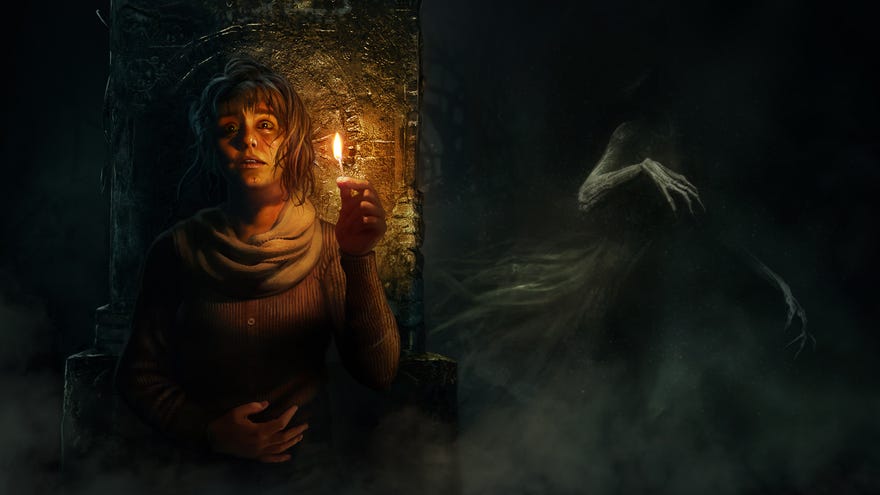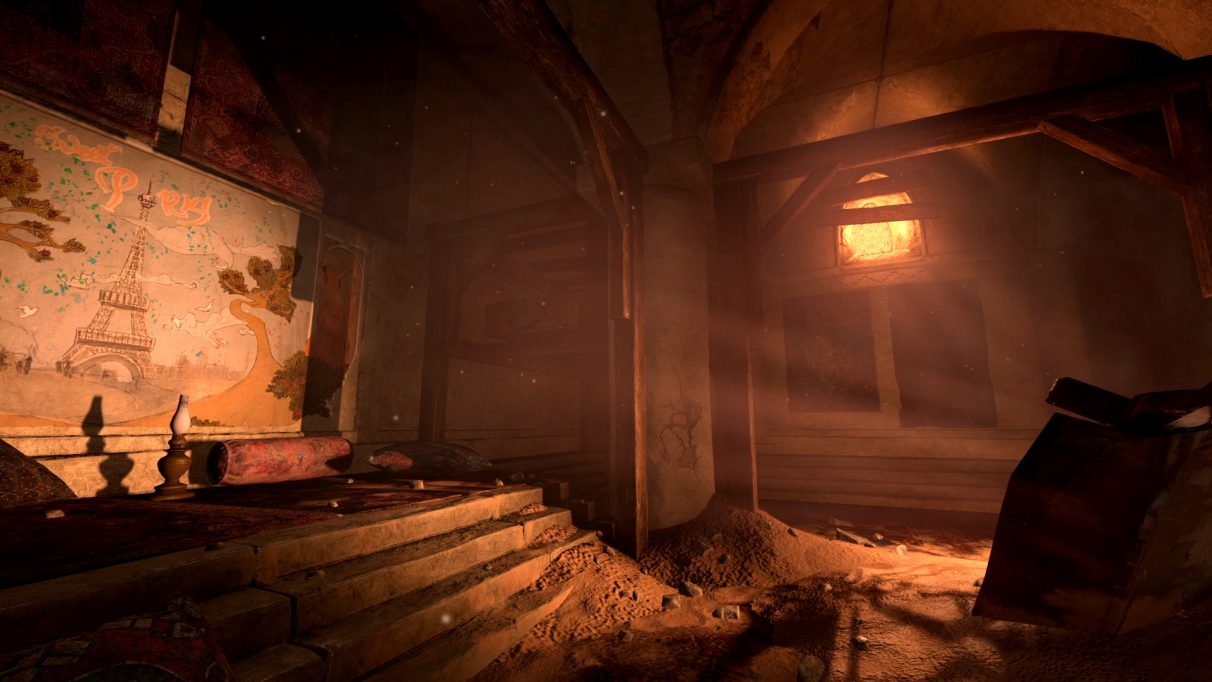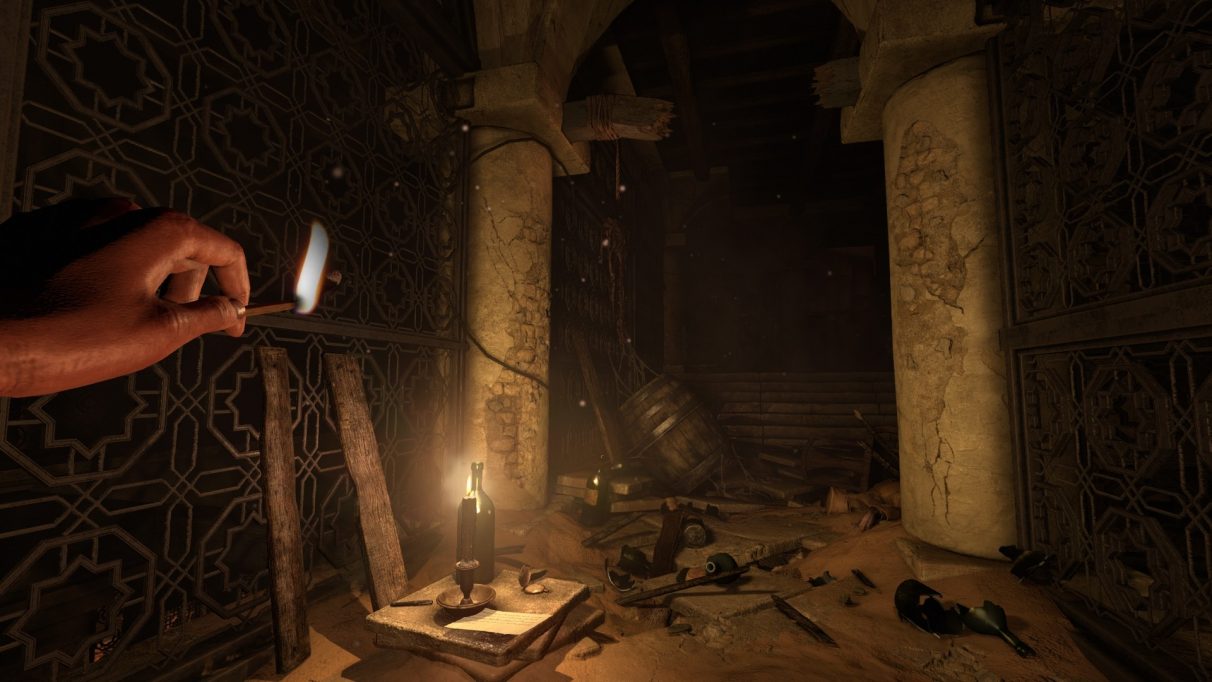Amnesia: Rebirth's bright setting is designed to create a different type of fear, Frictional Games tell us
"What's scary isn't the monsters or location, it's that you're stranded"
The year is 1937, and you've just woken up in a crashed plane in the middle of a desert. You're not some sort of Indiana Jones-esque film though, I'm afraid, you're in a horror game - Amnesia: Rebirth, to be exact. It's the new survival horror from Frictional Games, the team behind Amnesia: The Dark Descent and Soma, and it's out today.
How can the horror of a traditionally dark and dingy series hold up under the bright desert sun? I talked with game director Thomas Grip and creative lead Fredrik Olsson to find out. We also discussed monsters and things they've learned from their old games, as well as how player choice can make horror that much more horrifying.
Straight away, Rebirth's setting caught my eye. Or settings, rather, because the game travels through varied environments, from caves and tunnels to a warm sunny desert.
Originally, Grip tells me the team was torn between setting Rebirth in somewhere cold and desolate like Antarctica, or hot and sandy like the Algerian desert. But dark and snowy has been done to death in horror, and after being inspired by a book called Skeletons Of The Sahara, Grip pitched the idea of somewhere a little warmer.
"We thought a desert would be a good place to have horror, it's basically a wasteland," he says. "But then as we actually implemented it all, we realised it's so hard to do anything in a desert. For one, it's not that scary because it's bright and sunny and it looks like the beach. And for the other, horror gameplay is usually like, so the player finds a note...but in the middle of the desert? Why would you find that there?
"So, we expanded upon the environments from there, adding caves and ruins and all that sort of thing. I feel that the desert right now is more like a palate cleanser where you come out of a dark cave, and it's like, 'Oh, light finally!' But then you're obviously in the middle of nowhere. It still feels like you're not in a safe place, but you're at least in a bright place."
But how on Earth do you make an area like that scary? According to Grip, they don't.
"What's scary isn't the location, it's that you're stranded," he tells me.
"It's also a different type of fear, I guess, or scariness," Olsson adds. "It's a worry that the player can have just by sensing that they are out in the middle of nowhere with no help to be found. It's a similar idea to Soma's underwater setting. You're at the very bottom of an ocean, and that feels like a very pressuring situation to be in. Whereas now it's the wasteland, and the lack of help or lack of civilisation. So it's not really about monsters or scares in that sense."
"Even in the middle of the ocean it's not that interesting," Grip says. "It's all the things you find in the ocean. And similarly in Rebirth, it's all the things being buried beneath the sand - that's what's interesting."
Making these sorts of atypical horror environments work, however, came with a good set of challenges.
"Scariness often comes clashing with gameplay, so what we tried early was a lot of sandstorms. Problem with that is then you can't see very well, and since in the desert, everything looks the same, we realized again that that was not an environment you would want to run around in for a long time," Grip tells me.
They say the solution to this was making the desert more open. Rather than having storms that fogged up your vision making it a bit claustrophobic, Frictional upped the draw distances so you could see further out. This isn't particularly scary, but it does add to this idea of isolation, then the game's narrative brings the rest of the spookiness to further that sense of unease.
Obviously, this isn't the only area you'll be exploring in Rebirth. In fact, there are actually loads of different places the game will take you, which is something Alice Bee found particularly impressive in her Amnesia: Rebirth review.
Frictional have learned a lot from Soma, it seems, from environment building to its storytelling techniques to help everything in Rebirth connect more than in their earlier games.
"Making the first Amnesia, the biggest thing I felt we failed with was getting the thematics across," Grip tells me. "Soma was just 100% focused: we had themes, those themes needed to get across to the player. In all that, we sort of lost track of combining everything with like a very solid gameplay foundation, and it got a bit tacked on. I don't feel it's bad, but it's not as good as it could have been."
As a result, Rebirth has ended up with some of the stronger features from Dark Descent: a new type of sanity system, resource collecting and the ability to light light sources. The devs say Rebirth essentially modernises the Amnesia experience, taking the bits that worked, updating them, and adding in a few extra twists and turns on the way.
"I also think one of the main differences from our older games is that we have actually brought on board some sense of real consequences for the player if they have played poorly or not," Olsson tells me.
"A thing with horror games that we learned making Penumbra was trial and error loops, which is; you come across a monster, monster kills you, now you have to restart the entire sequence. Those get boring and frustrating fast, because it's no longer encountering a mysterious unknown creature, it's getting across a gameplay obstacle," says Grip.
"So in Amnesia, we simply fix that by teleporting to player back and removing the monsters or changing the position of the monster, which worked quite well because people were unaware of this little trick. But they either found out about it like later on in a game or after playing a game. So we don't want to repeat that, but we still want to make sure that we don't have this loop of trial and error going on. We want to have a better way of giving consequences if you play poorly."
In Rebirth, this comes in the form of protagonist Tasi's fear. A bit different from the sanity system in Dark Descent, the higher her fear becomes, the worse her "affliction" is, so you have to control that throughout the game. A lot of the narrative is built around how this fear progresses, setting it apart from Frictional's previous games.
As always with horrors, a big part of building that fear is the aforementioned monsters.
"I think that we actually spent more time than we've ever had in any other game just thinking about how the monsters should behave in Rebirth," Grip tells me. "Not just on an AI basis, but what type of situations you meet it in, what sort of build up you have, what are the narrative implications of the monsters, and so on."
"We put a lot of emphasis on not making the monsters just feel tacked on, or put in there just for the scare," Olsson adds. "All of the monsters in this game I'd say have a narrative connection and have an implication on the gameplay and the consequences."
It's actually for this reason they tell me Rebirth doesn't have a "safe mode" like Soma's. With monsters being tied to the narrative, it's not as easy to just remove them. However, Olsson says it is something he'd at least like to consider so more people could enjoy the story.
"The playtesting that we've done gave us really good feedback on the narrative, and it feels almost like a shame if some people don't get to experience it because they don't like the horror aspect of it," he tells me. "But no decisions have been made yet."
Something Frictional say they are adding and improving from a previous game, however, are the overarching consequences to some of the smaller choices you make throughout Rebirth. In Amnesia: Dark Descent, players have that decision to make of being in the dark and hidden from monsters, or being in the light and making it easier for the nasties to spot you. It's a similar case in the new one.
"You're always in this state of tension," Grip says. "If you sit in this dark corner, and let that monster walk past you, you're safe for now, but your fear levels are going to rise. That's going to be bad for the affliction, which has long narrative consequences. But then if the monster catches you, that's going to have consequences immediately."
"A lot of the choices are on this lower level, they're more micro choices than you see in movies. If you're sitting watching a movie, and someone goes into a dark cellar, you can sit there like, 'Don't do it! Don't do it! Dammit! Don't go into the dark cellar, there's got to be something bad down there!' But someone does that action for you in the film.
"In a horror game, you have to be the one that physically opens the door and goes down into that dark basement. There's not always a lot of choice, you have to perhaps do that in order to play the game. But the trick is to set it up so it feels like, 'Should I be going there?' If the player has a neon arrow saying you have to go down there then you lose a bit of that, but just the slight doubt makes players wonder if it's a good idea."
"I think you can even take it down a lower level - even just, 'Should I use this match to light this light up?' If we activate that part of the brain in the player, then it eventually becomes immersion. That's when you can trigger true horror, true emotions. If the player isn't immersed, that's when there's a disconnect," Olsson says.
"There are multiple levels of these choices. And of course, a few of those bigger choices are important in these kinds of games. But I think the low-level choice very much gives the player a sense of them actually controlling the world and controlling their journey, even though they might not be actually controlling the journey that much."
It's the decision making aspect of these types of games that often leave you questioning things long after you've reached the credits. It's not a conscious design decision when making the game though, more a side effect of the stories they're telling.
"With Soma, so many players reported them thinking about the game long after. But that wasn't just a design decision like 'Oh, we want to have a game that makes people think about it', that's not how you start doing that. Instead, what you have is that you have a feeling or a set of ideas that you think are interesting, then that's the seed that everything else grows from."
Grip and Olsson tell me Rebirth has more personal themes running throughout it, rather than the philosophical themes Soma did.
"It sounds a bit boring, but the underpinning is: what would you do to save your loved ones?" Grip says. "That's what we're aiming for. So it's more like... it's not the grand meaning of life sort of philosophical question as in we had in Soma. I don't think people should go in and have the sorts of philosophical discussions they had with that game. It's much more personal and it's expressed in different ways in a less explicit way."
This made me wonder about what the main character's driving force actually was. I got an appropriate answer for my very buzz-wordy question.
"Well, it's to get the hell out of the desert!," Grip tells me.
"And of course, understanding what happened," Olsson adds.
"I think one of the important things was we wanted to have a strong motivation very early on. You see many games switching motivation halfway through, and we wanted to establish something that's pretty much true from the first, you know, five minutes of the game all the way to the end," Grip says.
For a little context on what that motivation is (spoiler!), from early on in the game, you discover Tasi is pregnant. This is clearly a very good reason to not want to be stranded in the desert, and a motivation that stays with you throughout Rebirth. Grip adds that it's a way to give you more selfish reasons to want to escape your situation at the beginning of the game, but as you progress, you'll be made to think more about others that may also be in trouble.
"I'm really looking forward to seeing how players are going to take this on," he tells me. "There's a risk moment here. There's a certain empathy requirement in order to fully immerse yourselves in the story, but it's similar with things in Soma.
"I remember someone playing that and not really understanding that empathy, they thought the idea of robots having emotions was completely sick. For someone like that, Soma is not going to work. Then there is this, albeit very different, sort of empathy in Rebirth. But the same thing is true if you don't make certain connections, and you're not going to have the experience we want you to have."
"I just hope players will come out of it thinking back to this game and thinking about how they felt immersed into it," Olsson tells me. "There's no big philosophical theme, at least, not one, but I think we can't even imagine the things that people will discuss from Rebirth. I think that people will pick up on things that we haven't thought about."
Amnesia: Rebirth is out now on Steam, GOG and the Epic Games Store, priced at £24/€25/$30.






